General PPWR impacts on all packaging
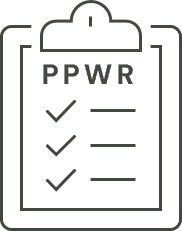
The Packaging and Packaging Waste Regulation (PPWR) is guided by several fundamental principles aimed at reducing environmental impact, promoting harmonized sustainable packaging practices, and establishing end-of-life responsibility. This new regulation will have significant and long-term effects on the European packaging market.
The key ideas driving this regulation:
1. Waste Reduction: The PPWR aims to minimize waste production, regardless of the type of raw material used in packaging.
2. Transition to a Circular Economy: The regulation encourages a shift from the historical linear economy model to a circular economy. It sets strict standards for recyclability and mandates a minimum amount of recycled content in packaging supporting the most efficient CO2e emission recycling processes and cost-competitive technologies, such as mechanical recycling. This initiative aims to decrease dependence on virgin raw materials.
3. Replacing Single-Use Packaging: The regulation aims to promote reusable packaging over single-use, by introducing targets for reusable packaging for certain formats (beverage, transport…), restricting the use of certain plastic packaging formats (condiments, dine-in food and beverage…), and introducing an obligation to provide refillable or reusable packaging for take away food and drinks.
4. Enhanced Control on Packaging Safety: The PPWR emphasizes packaging safety for human health. It addresses concerns related to substances in packaging to ensure innocuity.
The Regulation aims to apply to all packaging (B2C and B2B) and packaging materials introduced to European market, as well as to all packaging waste.
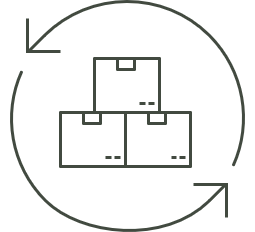
Article 6 - All packaging must be recyclable (2030 & 2038)
All packaging will need to comply with Design for Recycling (DfR) criteria by 2030.
DfR criteria is currently being developed by CEN and will be officially adopted by the European Commission via delegated acts by 2028. Current CEN DfR draft criteria are not final versions so assessments prior are subject to change.
These parameters will impact the recyclability of the packaging:
• Material composition (mono or multilayers/barriers)
• Additives (filling materials)
• Colours (masterbatches, NIR detectable)
• Closures and other small packaging components
• Sleeves
• Adhesives and labels
• Coatings & inks and lacquers
• Product residues/ease of emptying
• Ease of dismantling/separation
When parts of the packaging separate in the recycling stream they are considered as individual components which can both lead into their own individual material stream and counted as recyclable.
The recyclability performance will be expressed in grades, based on recyclable weight share of the entire packaging: A (>95%), B (>80%) or C (>70%).

Packaging that is less than grade C will be banned by 2030 from the European market. By 2038, grade C will also be banned.
As of 2035, packaging will also need to be collected separately, sorted into specific waste streams and recycled at scale. For more details check the below section.
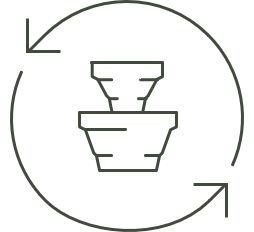
Article 7 - Minimum recycled content in plastic packaging
By 1 January 2030, any plastic part of packaging placed on the market shall contain the following minimum percentage of recycled content recovered from post-consumer plastic waste, per packaging type and format, calculated as an average per manufacturing plant and year:
|
Contact Sensitive Packaging categories (food-contact) |
2030 |
2040 |
|
PET as major component (eg. trays, cups, tumblers) |
30% |
50% |
|
Non-PET as major component (eg. PP, PS, PE etc.) |
10% |
25% |
|
Single use plastic beverage bottles |
30% |
65% |
|
All other types of packaging |
35% |
65% |
Post-consumer plastic waste (PCR) is defined as waste that has been collected from the consumer after use inside or outside the EU with high-quality for separate collection and recycling.
Exceptions are applied to packaging:
• intended to come into contact with food where the quantity of recycled content poses a threat to human health such as baby food and medical or healthcare packaging
• with less than 5% plastic of the total weight (e.g paper cups)
The final methodology for PCR calculation will be established by end of 2026. Current draft criteria is not the final version, so assessments prior are subject to change.

Article 6 - All packaging must be recyclable at scale (2035)
After 2035 packaging will only be allowed on the European market when 55% of the weight of the packaging is collected separately, sorted and recycled in existing infrastructures using, established processes that have proven themselves in an operational environment.
The recycling targets for 2025 and 2030, set out in the previous EU directive for all main packaging materials, will remain. Member States will be able to postpone reaching the targets by up to five years.
|
Recycling Targets |
By 2025 |
By 2030 |
|
All packaging |
65% |
70% |
|
Paper and cardboard |
75% |
85% |
|
Glass |
70% |
75% |
|
Plastic |
50% |
55% |
|
Wood |
25% |
30% |

Chapter VII and Article 39 - Certificate of conformity
The manufacturer or importer of packaging is required to provide a declaration of conformity covering all PPWR regulations.
Before placing packaging on the market, manufacturers shall carry out the conformity assessment procedure and have available technical documentation. Where compliance with the PPWR requirements has been demonstrated, manufacturers shall draw up a declaration of conformity.
The technical documentation shall contain, wherever applicable, at least the following elements:
(a) a general description of the packaging and its intended use;
(b) conceptual design, manufacturing drawings and materials of components;
(c) descriptions and explanations necessary for the understanding of the drawings provided under point (b) and the schemes and operation of the packaging;
(d) a list of:
(i) the harmonised standards (E.g PCR content, PPWR recyclability grade) applied in full or in part;
(ii) the common specifications, applied in full or in part;
(iii) other relevant technical specifications used for measurement or calculation purposes;
(iv) in the event of partly applied harmonised standards or common specifications, an indication of the parts which have been applied;
(e) a qualitative description of how the assessments have been carried out,
(f) test reports.

Article 5 - Restrictions on PFAS and substances of concern
From 12 August 2026, food-contact packaging shall not be placed on the market if it contains per/poly-fluorinated alkyl substances (PFAS) in a certain concentrations.
Packaging placed on the market shall be so manufactured that the presence and concentration of substances of concern, as defined in the REACH regulation, in the packaging material or components is minimised.

Article 10 - Packaging minimisation (downgauging and empty space)
By 1 January 2030, packaging placed on the market shall be designed so that its weight and volume is reduced to the minimum necessary to ensure its functionality, taking into account the shape and material from which the packaging is made (E.g lightweighting and minimising empty space in sales packaging).
Article 24
By 1 January 2030, economic operators who fill grouped packaging, transport packaging or e-commerce packaging shall ensure that the maximum empty space ratio, expressed as a percentage, is 50 %.

Article 29 - Reuse targets
From 2030 there are reuse targets for some packaging which aim to significantly reduce packaging waste by encouraging manufacturers to prioritise reusable packaging solutions.
Manufacturers are encouraged to develop and implement systems that facilitate the return, refill, and reuse of packaging. This includes creating infrastructure to support reusable packaging for transport, as well as collaborating with retailers and consumers.
‘Transport Packaging’ means packaging that facilitates the handling and transport of one or more sales units.
|
Re-use targets |
2030 |
2040 (“shall endeavour”) |
|
Transport packaging (e.g pallets, foldable boxes, plastic crates, intermediate bulk container) |
40% |
70% |
|
Transport packaging between two sites on which an economic operator performs its activities, or between two sites within the same Member State. |
100% |
- |
|
Grouped packaging |
10% |
25% |
|
Beverage packaging |
10% |
40% |

EPR fees are modulated based on the product recyclability, reusability, recycled content, and any complex material combinations that affect the environmental impact of the product. A lower environmental impact incurs lower fees, while a higher impact will incur higher fees.
Article 6
EPR fees must be ecomodulated according the recyclability performance grade of packaging (mid-2029)
Article 7
EPR fees may be ecomodulated based on the percentage of recycled content used in the packaging. Any such modulation shall take into account sustainability criteria of the recycling technologies and the environmental costs for the purposes of recycled content.
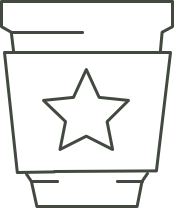
Article 12 - Harmonised labelling requirements
From 12 August 2028:
• Packaging must include standardised labels that clearly indicate the material composition and recyclability.
• Labels must be prominently displayed and easily readable to ensure that consumers can quickly understand the recycling instructions.
• The use of universal symbols and terminology for recycling instructions is mandated to avoid confusion and promote consistency across all member states.
• Manufacturers are required to provide additional information on packaging labels regarding environmental impacts and encouraging responsible consumer behaviour. Digital passports via QR codes are allowed to facilitate this.
These harmonized labelling requirements aim to simplify the recycling process, reduce contamination in recycling streams, and support the EU's broader environmental goals. Companies that bring the final sales packaging on the market will need to adapt their labelling practices to meet these new standards. These labels will correspond to recycling bin icons.
As of 12 February 2029, reusable packaging shall bear a label informing users that the packaging is reusable. Further information on reusability, including the availability of a local, national or union-wide re-use system and information on collection points, shall be made available through a QR code.
Packaging that is subject to deposit and return systems shall be marked with an obvious label.

Article 14 - Limits to environmental claims
Environmental claims concerning packaging properties shall only be made if said properties exceed the minimum applicable requirements set out in the PPWR Regulation.
Environmental claims should specify whether they relate to the packaging unit, part of the packaging unit or all packaging placed on the market.
Claims must be in line with the PPWR definitions (e.g post-consumer recyclate and recyclability grade assessments)
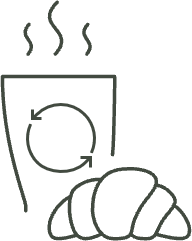
Reuse and refill obligations in the HORECA sector
Article 32
By 12 February 2027, final distributors that conduct their business activity in the HORECA sector and make available hot or cold beverages, or ready-prepared food in take-away packaging shall provide a system for consumers to bring their own container to be filled.
Article 33
By 12 February 2028, final distributors that conduct their business activity in the HORECA sector and that make available hot or cold beverages or ready-prepared food in take-away packaging shall give consumers the option of obtaining the products in re-useable packaging within a system for re-use.
Micro-enterprises are exempt.

Article 25 - Restrictions on single-use packaging formats
From 1 January 2030, economic operators shall not place on the market the following packaging types:
- Single-use plastic grouped packaging. (E.g two toothpaste tubes in one carton box). This excludes grouped packaging necessary to facilitate handling. (E.g six bottles of water in shrink wrap)
- Single-use plastic packaging for less than 1.5 kg pre-packed fresh fruit and vegetables (e.g punnets of berries/mushroom tray. Exceptions can be decided upon at national level)
- Single-use plastic packaging for foods and beverages filled and consumed within the premises in the HORECA sector (e.g plastic sushi/burger tray)
- Single-use plastic packaging for condiments, preserves, sauces, coffee creamer, sugar, and seasoning in HORECA sector (e.g single serving ketchup pots)
- Single-use packaging for cosmetics, hygiene and toiletry products for the use in the accommodation sector (e.g miniature sized shampoo)
- Very lightweight plastic carrier bags (e.g exception allowed for hygiene considerations/prevention of food waste for loose food)
For further details please check Annex V (Page 102-103) of REGULATION (EU) 2025/40 OF THE EUROPEAN PARLIAMENT AND OF THE COUNCIL
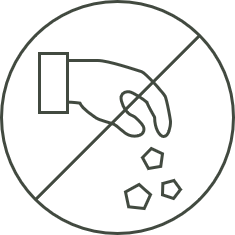
Article 43 - Prevention of Packaging Waste
The PPWR introduces the following Member State packaging waste prevention targets to reduce the packaging waste generated per capita, as compared to the packaging waste generated per capita in 2018:
|
(All packaging) VS 2018 |
Timing |
|
-5% |
2030 |
|
-10% |
2035 |
|
-15% |
2040 |
Member States may, by 2025, request the EC to use another base year than 2018, under the condition that there is substantiated evidence justifying the request.
2018 the EU generated 77 million tons (Packaging-Consilium) of packaging waste:
• 40% paper and cardboard
• 19% plastic – 14.63 million tons
• 18.5% glass
• 17% wood
• 5% metal
By 7 years from the EiF of PPWR (Q1 2032), the Commission shall review the targets and assess the need to include specific targets for certain packaging materials, by legislative proposal.
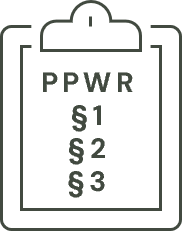
For further details you can check the PPWR directly here

l Regolamento sugli imballaggi e i rifiuti di imballaggio (PPWR) è guidato da diversi principi fondamentali volti a ridurre l'impatto ambientale, a promuovere pratiche di imballaggio sostenibili ed armonizzate e a stabilire la responsabilità estesa su tutta la filiera fino al fine di vita dell’imballaggio. Questo nuovo regolamento avrà effetti significativi e a lungo termine sul mercato europeo degli imballaggi.
Le linee guida chiave che guidano questo regolamento sono :
- Riduzione dei rifiuti: Il PPWR mira a ridurre al minimo la produzione di rifiuti, indipendentemente dal tipo di materia prima utilizzata negli imballaggi.
- Transizione verso un'economia circolare: Il regolamento incoraggia il passaggio dallo storico modello di economia lineare a un'economia circolare. Stabilisce standard rigorosi per la riciclabilità e impone una quantità minima di contenuto riciclato negli imballaggi, sostenendo i processi di riciclaggio più efficienti in termini di emissioni di CO2e e tecnologie competitive in termini di costi, come il riciclaggio meccanico. Questa iniziativa mira a ridurre la dipendenza europea dalle materie prime vergini.
- Sostituzione degli imballaggi monouso: Il regolamento mira a promuovere gli imballaggi riutilizzabili rispetto a quelli monouso, introducendo obiettivi per gli imballaggi riutilizzabili per alcuni formati (bevande, trasporti...), limitando l'uso di alcuni formati di imballaggi in plastica (condimenti, cibi e bevande da tavola.) e introducendo l'obbligo di fornire imballaggi ricaricabili o riutilizzabili per cibi e bevande da asporto.
- Maggiore controllo sulla sicurezza degli imballaggi: Il PPWR pone l'accento sulla sicurezza degli imballaggi per la salute umana. Affronta i problemi legati alle sostanze contenute negli imballaggi per garantirne la sicurezza e l’assenza di sostanze nocive.
Il regolamento si applica a tutti gli imballaggi (B2C e B2B) e ai materiali di imballaggio introdotti nel mercato europeo, nonché a tutti i rifiuti di imballaggio.

Articolo 6 - Tutti gli imballaggi devono essere riciclabili (2030 e 2038)
Tutti gli imballaggi dovranno essere conformi ai criteri di progettazione per il riciclaggio (DfR Design For Recycling) entro il 2030.
I criteri DfR sono attualmente in fase di sviluppo da parte del CEN e saranno ufficialmente adottati dalla Commissione europea tramite atti delegati entro il 2028. Le attuali bozze dei criteri CEN DfR non sono versioni definitive, pertanto potrebbero essere soggette a modifiche.
Parametri che avranno un impatto sulla riciclabilità dell'imballaggio:
- composizione del materiale (mono o multistrato/barriere)
- Additivi
- Colori (masterbatches, rilevabili al NIR)
- Chiusure e altri piccoli componenti dell'imballaggio
- Manicotti
- Adesivi ed etichette
- Rivestimenti, inchiostri e lacche
- Residui di prodotto/facilità di svuotamento
- Facilità di smontaggio/separazione
Quando le parti dell'imballaggio si separano nel flusso di riciclaggio, vengono considerate come singoli componenti che possono sia confluire nel proprio flusso di materiali che essere considerati riciclabili.
Le prestazioni di riciclabilità saranno espresse in gradi, in base alla quota di peso riciclabile dell'intero imballaggio: A (>95%), B (>80%) o C (>70%).

Entro il 2030, gli imballaggi inseriti nel inferiore al grado C saranno banditi dal mercato europeo. Entro il 2038 sarà vietato anche il grado C.
A partire dal 2035, gli imballaggi dovranno essere raccolti separatamente, suddivisi in flussi di rifiuti e riciclati su scala. (ogni materiale dovrà quindi avere il proprio flusso di raccolta e riciclo)
Per maggiori dettagli, consultare la sezione sottostante.

Articolo 7 - Contenuto minimo di materiale riciclato negli imballaggi in plastica
Entro il 1° gennaio 2030, qualsiasi parte in plastica degli imballaggi immessi sul mercato dovrà contenere la seguente percentuale minima di contenuto riciclato recuperato da rifiuti plastici post-consumo, per tipo e formato di imballaggio, calcolata come media per impianto di produzione e anno:
|
Categorie di imballaggi sensibili al contatto (contatto con gli alimenti) |
2030 |
2040 |
|
PET come componente principale (come trays, cups, bicchieri, coperchi) |
30% |
50% |
|
Non-PET come componente principale (come PP, PE, PS, ecc.) |
10% |
25% |
|
Bottiglie per bevande monouso |
30% |
65% |
|
Altri tipi di imballaggi |
35% |
65% |
I rifiuti di plastica post-consumo (PCR) sono definiti come rifiuti raccolti dal consumatore dopo l'uso all'interno o all'esterno dell'UE con alta qualità per la raccolta differenziata e il riciclaggio.
Sono previste eccezioni per gli imballaggi
- destinati a venire a contatto con gli alimenti, dove la quantità di contenuto riciclato rappresenta una minaccia per la salute umana, come gli alimenti per bambini e gli imballaggi medici o sanitari
- con meno del 5% di plastica sul peso totale (ad esempio, bicchieri di carta).
La metodologia definitiva per il calcolo del PCR sarà stabilita entro la fine del 2026. L'attuale bozza dei criteri non è la versione definitiva, pertanto potrebbe essere soggetta a modifiche.

Articolo 6 - Tutti gli imballaggi devono essere riciclabili in scala (2035)
Dopo il 2035 gli imballaggi potranno essere immessi sul mercato europeo solo se il 55% del loro peso sarà raccolto separatamente, selezionato e riciclato nelle infrastrutture esistenti, utilizzando processi consolidati e collaudati .
Gli obiettivi di riciclaggio per il 2025 e il 2030, stabiliti nella precedente direttiva UE per tutti i principali materiali di imballaggio, rimarranno invariati. Gli Stati membri potranno posticipare il raggiungimento degli obiettivi fino a cinque anni.
|
Obiettivi di riciclaggio |
Entro il 2025 |
Entro il 2030 |
|
Tutti gli imballaggi |
65% |
70% |
|
Carta e cartone |
75% |
85% |
|
Vetro |
70% |
75% |
|
Plastica |
50% |
55% |
|
Legno |
25% |
30% |

Capitolo VII e Articolo 39 - Certificato di conformità
Il produttore o l'importatore di imballaggi è tenuto a fornire una dichiarazione di conformità che copra tutti i regolamenti PPWR.
Prima di immettere gli imballaggi sul mercato, i produttori devono eseguire la procedura di valutazione della conformità e disporre della documentazione tecnica. Se è stata dimostrata la conformità ai requisiti del PPWR, i produttori devono redigere una dichiarazione di conformità.
La documentazione tecnica deve contenere, ove applicabile, almeno i seguenti elementi:
- una descrizione generale dell'imballaggio e del suo uso previsto;
- progettazione concettuale, disegni di fabbricazione e materiali dei componenti;
- le descrizioni e le spiegazioni necessarie per la comprensione dei disegni di cui al punto (b) e degli schemi e del funzionamento dell'imballaggio;
- un elenco di:
- (i) le norme armonizzate (ad es. contenuto di PCR, grado di riciclabilità PPWR) applicate in toto o in parte;
- (ii) le specifiche comuni, applicate in tutto o in parte;
- (iii) altre specifiche tecniche pertinenti utilizzate a fini di misurazione o di calcolo;
- (iv) in caso di applicazione parziale di norme armonizzate o specifiche comuni, l'indicazione delle parti applicate;
- una descrizione qualitativa di come sono state effettuate le valutazioni,
- rapporti di prova.

Articolo 5 - Restrizioni sui PFAS e sulle sostanze che destano preoccupazione
A partire dal 12 agosto 2026, gli imballaggi destinati al contatto con gli alimenti non potranno essere immessi sul mercato se contengono sostanze alchiliche per/poli-fluorurate (PFAS) in determinate concentrazioni.
Gli imballaggi immessi sul mercato devono essere fabbricati in modo da ridurre al minimo la presenza e la concentrazione di sostanze preoccupanti, come definite nel regolamento REACH, nel materiale di imballaggio o nei suoi componenti.

Articolo 10 - Riduzione al minimo degli imballaggi
Entro il 1° gennaio 2030, gli imballaggi immessi sul mercato devono essere progettati in modo da ridurre il peso e il volume al minimo necessario per garantirne la funzionalità, tenendo conto della forma e del materiale di cui è fatto l'imballaggio (ad esempio, alleggerimento e riduzione al minimo dello spazio vuoto negli imballaggi di vendita).
Articolo 24
Entro il 1° gennaio 2030, gli operatori economici che riempiono imballaggi raggruppati, imballaggi per il trasporto o imballaggi per il commercio elettronico devono garantire che la percentuale massima di spazio vuoto, espressa in percentuale, sia del 50%.

Articolo 29 - Obiettivi di riutilizzo
A partire dal 2030 sono previsti obiettivi di riutilizzo per alcuni imballaggi che mirano a ridurre significativamente i rifiuti di imballaggio incoraggiando i produttori a privilegiare soluzioni di imballaggio riutilizzabili.
I produttori sono incoraggiati a sviluppare e implementare sistemi che facilitino la restituzione, la ricarica e il riutilizzo degli imballaggi. Ciò include la creazione di infrastrutture a supporto degli imballaggi riutilizzabili per il trasporto e la collaborazione con i rivenditori e i consumatori.
Per "imballaggio per il trasporto" si intende l'imballaggio che facilita la movimentazione e il trasporto di una o più unità di vendita.
|
Obiettivi di riutilizzo |
2030 |
2040 ("si impegnerà") |
|
Imballaggi per il trasporto (ad esempio pallet, scatole pieghevoli, casse di plastica, container intermedi per il trasporto alla rinfusa) |
40% |
70% |
|
Imballaggi per il trasporto tra due siti in cui un operatore economico svolge le proprie attività o tra due siti all'interno dello stesso Stato membro. |
100% |
- |
|
Imballaggi raggruppati |
10% |
25% |
|
Imballaggi per bevande |
10% |
40% |

Tariffe EPR eco-modulate
Le tariffe EPR sono modulate in base alla riciclabilità del prodotto, al riutilizzo, al contenuto di materiale riciclato e a qualsiasi combinazione complessa di materiali che influisce sull'impatto ambientale del prodotto. Un impatto ambientale minore comporta tariffe più basse, mentre un impatto maggiore comporta tariffe più elevate.
Articolo 6
Le tariffe EPR devono essere ecomodulate in base al grado di riciclabilità degli imballaggi (metà del 2029).
Articolo 7
I corrispettivi EPR possono essere ecomodulati in base alla percentuale di contenuto riciclato utilizzato nell'imballaggio. Tale modulazione deve tenere conto dei criteri di sostenibilità delle tecnologie di riciclaggio e dei costi ambientali legati al contenuto riciclato.

Articolo 12 - Requisiti di etichettatura armonizzati
A partire dal 12 agosto 2028:
- Gli imballaggi devono includere etichette standardizzate che indichino chiaramente la composizione del materiale e la riciclabilità.
- Le etichette devono essere ben visibili e facilmente leggibili per garantire che i consumatori possano comprendere rapidamente le istruzioni per il riciclaggio.
- L'uso di simboli e terminologia universali per le istruzioni di riciclaggio è obbligatorio per evitare confusione e promuovere la coerenza in tutti gli Stati membri.
- I produttori sono tenuti a fornire informazioni aggiuntive sulle etichette degli imballaggi in merito all'impatto ambientale e a incoraggiare un comportamento responsabile da parte dei consumatori. A tal fine sono consentiti passaporti digitali tramite codici QR.
Questi requisiti di etichettatura armonizzati mirano a semplificare il processo di riciclaggio, a ridurre la contaminazione nei flussi di riciclaggio e a sostenere i più ampi obiettivi ambientali dell'UE. Le aziende che immettono sul mercato l'imballaggio finale di vendita dovranno adattare le loro pratiche di etichettatura per soddisfare questi nuovi standard. Le etichette corrisponderanno alle icone dei contenitori per il riciclaggio.
A partire dal 12 febbraio 2029, gli imballaggi riutilizzabili dovranno recare un'etichetta che informi gli utenti che l'imballaggio è riutilizzabile. Ulteriori informazioni sulla riutilizzabilità, tra cui la disponibilità di un sistema di riutilizzo a livello locale, nazionale o sindacale e informazioni sui punti di raccolta, devono essere rese disponibili attraverso un codice QR.
Gli imballaggi soggetti a sistemi di deposito e restituzione devono essere contrassegnati da un'etichetta evidente.

Articolo 14 - Limiti alle indicazioni ambientali
Le indicazioni ambientali relative alle proprietà degli imballaggi possono essere fornite solo se tali proprietà superano i requisiti minimi applicabili stabiliti dal regolamento PPWR.
Le dichiarazioni ambientali devono specificare se si riferiscono all'unità di imballaggio, a una parte dell'unità di imballaggio o a tutti gli imballaggi immessi sul mercato.
Le dichiarazioni devono essere in linea con le definizioni del PPWR (ad esempio, valutazioni del riciclaggio post-consumo e del grado di riciclabilità).

Obblighi di riutilizzo e di riempimento nel settore HORECA
Articolo 32
Entro il 12 febbraio 2027, i distributori finali che svolgono la loro attività nel settore HORECA e mettono a disposizione bevande calde o fredde o alimenti pronti in confezioni da asporto devono prevedere un sistema che consenta ai consumatori di portare il proprio contenitore da riempire.
Articolo 33
Entro il 12 febbraio 2028, i distributori finali che svolgono la loro attività nel settore HORECA e che mettono a disposizione bevande calde o fredde o alimenti pronti in imballaggi per l'asporto offrono ai consumatori la possibilità di ottenere i prodotti in imballaggi riutilizzabili nell'ambito di un sistema di riutilizzo.
Le microimprese sono esenti.

Articolo 25 - Restrizioni sui formati degli imballaggi monouso
A partire dal 1° gennaio 2030, gli operatori economici non potranno immettere sul mercato i seguenti tipi di imballaggio:
- Imballaggi raggruppati in plastica monouso. (Ad esempio, due tubetti di dentifricio in una scatola di cartone). Sono esclusi gli imballaggi raggruppati necessari per facilitare la movimentazione. (ad esempio, sei bottiglie d'acqua in un involucro termoretraibile).
- Imballaggi monouso in plastica per frutta e verdura fresca preconfezionata di peso inferiore a 1,5 kg (ad es. vaschette di frutti di bosco/vaschette di funghi). Le eccezioni possono essere decise a livello nazionale)
- Imballaggi in plastica monouso per alimenti e bevande riempiti e consumati all'interno dei locali del settore HORECA (ad es. vassoio in plastica per sushi/burger)
- Imballaggi in plastica monouso per condimenti, conserve, salse, creme per caffè, zucchero e condimenti nel settore HORECA (ad es. vasetti di ketchup monodose)
- Imballaggi monouso per cosmetici, prodotti per l'igiene e articoli da toilette da utilizzare nel settore ricettivo (ad esempio shampoo in formato miniatura)
- Sacchetti di plastica molto leggeri (ad esempio, eccezione consentita per motivi di igiene/prevenzione dei rifiuti alimentari per gli alimenti sfusi).
Per ulteriori dettagli, consultare l'Allegato V (pagg. 102-103) del REGOLAMENTO (UE) 2025/40 DEL PARLAMENTO EUROPEO E DEL CONSIGLIO.

Articolo 43 - Prevenzione dei rifiuti di imballaggio
Il PPWR introduce i seguenti obiettivi di prevenzione dei rifiuti di imballaggio da parte degli Stati membri per ridurre i rifiuti di imballaggio generati pro capite rispetto ai rifiuti di imballaggio generati pro capite nel 2018:
|
(Tutti gli imballaggi) VS 2018 |
Tempistica |
|
-5% |
2030 |
|
-10% |
2035 |
|
-15% |
2040 |
Entro il 2025 gli Stati membri possono chiedere alla CE di utilizzare un anno di riferimento diverso dal 2018, a condizione che vi siano prove documentate che giustifichino la richiesta.
Nel 2018 l'UE ha generato 77 milioni di tonnellate (Packaging-Consilium) di rifiuti di imballaggio:
- 40% carta e cartone
- 19% plastica - 14,63 milioni di tonnellate
- 18,5% vetro
- 17% legno
- 5% metallo
Entro 7 anni dall'EiF del PPWR (1° trimestre 2032), la Commissione rivedrà gli obiettivi e valuterà la necessità di includere obiettivi specifici per alcuni materiali di imballaggio, mediante una proposta legislativa.

Per ulteriori dettagli, è possibile consultare il PPWR direttamente qui:

La Réglementation sur les Emballages et les Déchets d'Emballages (PPWR) repose sur plusieurs principes fondamentaux visant à réduire l'impact environnemental, à promouvoir des pratiques d'emballage durables et harmonisées, et à établir la responsabilité en fin de vie des produits. Cette nouvelle réglementation aura des effets significatifs et pérennes sur le marché européen des emballages.
Les concepts fondamentaux à l’origine de cette réglementation :
- Réduction des déchets : La PPWR vise à minimiser la production de déchets, quel que soit le type de matière première utilisé dans l'emballage.
- Transition vers une économie circulaire : La réglementation encourage un passage du modèle économique linéaire traditionnel à une économie circulaire. Elle établit des normes strictes pour la recyclabilité et impose une quantité minimale de contenu recyclé dans les emballages, favorisant les processus de recyclage des émissions de CO2e les plus efficaces et les technologies compétitives en termes de coûts, telles que le recyclage mécanique. Cette initiative vise à réduire la dépendance aux matières premières vierges.
- Remplacement des emballages à usage unique : La réglementation vise à favoriser les emballages réutilisables au détriment des emballages à usage unique, en établissant des objectifs pour les emballages réutilisables dans certains formats (boissons, transport…), en limitant l'utilisation de certains formats d'emballages plastiques (condiments, aliments et boissons consommés sur place…), et en imposant l'obligation de fournir des emballages rechargeables ou réutilisables pour les aliments et boissons à emporter.

Article 6 -
Tous les emballages doivent être recyclables (2030 & 2038)
Tous les emballages devront se conformer aux critères de Design for Recycling (DfR) d'ici 2030.
Les critères DfR sont en cours d'élaboration par le CEN et seront officiellement adoptés par la Commission Européenne via des actes délégués d'ici 2028. Les versions actuelles des critères DfR du CEN ne sont pas définitives, donc les évaluations antérieures sont sujettes à des modifications.
Ces paramètres auront un impact sur la recyclabilité des emballages :
- Composition des matériaux (mono ou multi-couches/barrières)
- Additifs (matériaux de remplissage)
- Couleurs (mélanges maîtres, détectables par NIR)
- Fermetures et autres petits composants d'emballage
- Manchons
- Adhésifs et étiquettes
- Revêtements & encres et laques
- Résidus de produits / facilité de déversement.
- Simplicité de désassemblage / séparation
La performance de recyclabilité sera exprimée en catégories, en fonction de la proportion de poids recyclable de l'ensemble de l'emballage : A (>95 %), B (>80 %) ou C (>70 %).
Lorsque des parties de l'emballage se séparent dans le flux de recyclage, elles sont considérées comme des composants individuels qui peuvent chacun rejoindre leur propre flux de matériaux et être comptabilisés comme recyclables.
La performance de recyclabilité sera exprimée en grades, basés sur la part de poids recyclable de l'ensemble de l'emballage : A (>95 %), B (>80 %) ou C (>70 %).

L'emballage dont la performance de recyclabilité est inférieure à la catégorie C sera interdit sur le marché européen d'ici 2030. D'ici 2038, la catégorie C sera également interdite.
À partir de 2035, les emballages devront être collectés de manière séparée, triés en flux de déchets spécifiques et recyclés à grande échelle. Pour plus de détails, consultez la section ci-dessous.

Article 7 - Contenu minimum recyclé dans les emballages en plastique
À partir du 1er janvier 2030, chaque composant en plastique des emballages mis sur le marché devra contenir les pourcentages minimaux suivants de contenu recyclé provenant des déchets plastiques post-consommation, par type et format d'emballage, calculés en moyenne par site de fabrication et par année :
|
Catégories d'Emballages Sensibles au contact (contact alimentaire) |
2030 |
2040 |
|
PET comme composant principal |
30% |
50% |
|
PET n'est pas le composant principal (comme PP, PS, etc.) |
10% |
25% |
|
Bouteilles de boisson à usage unique |
30% |
65% |
|
Autres types d'emballage |
35% |
65% |
Les déchets plastiques Post-consommation (PCR) sont définis comme des déchets collectés auprès des consommateurs après usage, que ce soit à l'intérieur ou à l'extérieur de l'UE, avec une qualité optimale permettant une collecte et un recyclage séparés.
Des exceptions s'appliquent aux emballages :
- destinés à entrer en contact avec des aliments lorsque la quantité de contenu recyclé présente une menace pour la santé humaine, comme les aliments pour bébés et les emballages médicaux ou de soins de santé
- contenant moins de 5 % de plastique par rapport au poids total (par exemple, les gobelets en papier)
La méthodologie finale pour le calcul du PCR sera établie d'ici la fin de l'année 2026. Les critères du projet actuel ne constituent pas la version définitive, donc les évaluations effectuées avant cette date sont susceptibles de changer.

Article 6 - Tous les emballages doivent être recyclables à grande échelle (2035)
À partir de 2035, seuls les emballages dont 55 % du poids est collecté séparément, trié et recyclé dans des infrastructures existantes utilisant des processus validés dans un environnement opérationnel seront autorisés sur le marché européen.
Les objectifs de recyclage pour 2025 et 2030, définis dans la précédente directive de l'UE concernant tous les principaux matériaux d'emballage, resteront en vigueur. Les États membres auront la possibilité de reporter l'atteinte de ces objectifs jusqu'à cinq ans.
|
Objectifs de Recyclage |
Pour 2025 |
Pour 2030 |
|
Tous les emballages |
65% |
70% |
|
Papier et carton |
75% |
85% |
|
Verre |
70% |
75% |
|
Plastique |
50% |
55% |
|
Bois |
25% |
30% |

Chapitre VII et Article 39 – Certificat de conformité
Le fabricant ou l'importateur d'emballages est tenu de fournir une déclaration de conformité couvrant toutes les réglementations PPWR.
Avant de mettre les emballages sur le marché, les fabricants doivent procéder à l'évaluation de la conformité et disposer de la documentation technique nécessaire. Une fois la conformité aux exigences PPWR démontrée, ils doivent établir une déclaration de conformité.
La documentation technique doit contenir, le cas échéant, au moins les éléments suivants :
- une description générale de l'emballage et de son utilisation prévue ;
- le design conceptuel, les dessins de fabrication et les matériaux des composants ;
- les descriptions et explications nécessaires à la compréhension des dessins mentionnés au point (b), ainsi que les schémas et le fonctionnement de l'emballage ;
- une liste comprenant :
- (i) les normes harmonisées (par exemple, le contenu PCR, le grade de recyclabilité PPWR) appliquées totalement ou partiellement ;
- (ii) les spécifications communes appliquées totalement ou partiellement ;
- (iii) d'autres spécifications techniques pertinentes utilisées pour des mesures ou des calculs ;
- (iv) en cas de normes harmonisées ou de spécifications communes appliquées partiellement, une indication des parties appliquées ;
- une description qualitative des méthodes d'évaluation employées
- les rapports de test.

Article 5 – Restrictions sur les PFAS les substances préoccupantes
À partir du 12 août 2026, les emballages alimentaires ne pourront pas être mis sur le marché s'ils contiennent des substances per/poly-fluorées (PFAS) à partir d’une certaine concentration.
L'emballage mis sur le marché doit être fabriqué de manière à minimiser la présence et la concentration de substances préoccupantes, telles que définies dans le règlement REACH, dans le matériau ou les composants de l'emballage.

Article 10 – Réduction des emballages
À partir du 1er janvier 2030, les emballages mis sur le marché devront être conçus de manière à réduire leur poids et leur volume au minimum nécessaire pour garantir leur fonctionnalité, en tenant compte de la forme et du matériau de l'emballage (par exemple, allègement et réduction des espaces vides dans les emballages de vente).
Article 24
D'ici le 1er janvier 2030, les opérateurs économiques qui remplissent des emballages groupés, des emballages de transport ou des emballages de commerce électronique doivent veiller à ce que le ratio d'espace vide maximal, exprimé en pourcentage, soit de 50 %.

Article 29 - Objectifs de réutilisation
À partir de 2030, des objectifs de réutilisation pour certains emballages visent à réduire significativement les déchets d'emballage en incitant les fabricants à privilégier les solutions d'emballages réutilisables.
Les fabricants sont encouragés à développer et à mettre en œuvre des systèmes qui facilitent le retour, le remplissage et la réutilisation des emballages. Cela inclut la création d'infrastructures pour soutenir les emballages réutilisables pour le transport, ainsi que la collaboration avec les détaillants et les consommateurs.
« Emballage de transport » signifie emballage qui facilite la manutention et le transport d'une ou plusieurs unités de vente.
|
Objectifs de réutilisation |
2030 |
2040 (“s’emploiera à”) |
|
Emballage logistique (par exemple palettes, cartons pliables, caisses en plastique, conteneurs intermédiaires pour vrac) |
40% |
70% |
|
Emballage logistique entre deux sites sur lesquels un opérateur économique exerce ses activités, ou entre deux sites situés dans le même État membre. |
100% |
- |
|
Emballage groupé |
10% |
25% |
|
Emballage de boisson |
10% |
40% |

Frais de REP éco-modulés
Les frais de REP sont modulés en fonction de la recyclabilité du produit, de sa réutilisabilité, de son contenu recyclé et de toute combinaison de matériaux complexes qui affectent l'impact environnemental du produit. Un impact environnemental moindre entraîne des frais moins élevés, tandis qu'un impact plus élevé entraînera des frais plus élevés.
Article 6
Les frais de REP doivent être éco modulés selon la note de performance de recyclabilité de l'emballage (mi-2029).
Article 7
Les frais de REP peuvent être éco modulés en fonction du pourcentage de contenu recyclé présent dans l'emballage. Toute modulation de ce type doit tenir compte des critères de durabilité des technologies de recyclage ainsi que des coûts environnementaux associés au contenu recyclé.

Article 12 - Exigences harmonisées en matière d'étiquetage
A partir du 12 août 2028 :
- L'emballage doit inclure des étiquettes standardisées indiquant clairement la composition des matériaux et la recyclabilité
- Les étiquettes doivent être affichées de manière bien visible et être facilement lisibles afin de garantir que les consommateurs puissent comprendre rapidement les instructions de recyclage.
- L'utilisation de symboles et de terminologie universels pour les instructions de recyclage est obligatoire afin d'éviter toute confusion et de promouvoir la cohérence entre tous les États membres.
- Les fabricants sont tenus de fournir des informations supplémentaires sur les étiquettes des emballages concernant les impacts environnementaux et d'encourager un comportement responsable des consommateurs. Les passeports numériques via des QR codes sont autorisés pour faciliter cela.
Ces exigences harmonisées en matière d'étiquetage visent à simplifier le processus de recyclage, à réduire la contamination dans les flux de recyclage et à soutenir les objectifs environnementaux de l'UE. Les entreprises qui commercialisent les emballages de vente finale devront adapter leurs pratiques d'étiquetage pour se conformer à ces nouvelles normes. Ces étiquettes correspondront aux icônes des bacs de recyclage.
À partir du 12 février 2029, les emballages réutilisables doivent porter une étiquette informant les utilisateurs que l'emballage est réutilisable. Des informations supplémentaires sur la réutilisabilité, y compris la disponibilité d'un système de réutilisation local, national ou à l'échelle de l'Union, ainsi que des informations sur les points de collecte, doivent être accessibles via un QR code.
Les emballages soumis à des systèmes de consigne et de retour doivent porter une étiquette clairement visible.

Article 14 - Restrictions sur les déclarations environnementales
Les revendications environnementales concernant les propriétés des emballages ne peuvent être faites que si ces propriétés dépassent les exigences minimales applicables définies dans le règlement PPWR.
Les revendications environnementales doivent préciser si elles concernent l'unité d'emballage, une partie de l'unité d'emballage ou l'ensemble des emballages mis sur le marché.
Les revendications doivent être conformes aux définitions du règlement PPWR (par exemple, les matériaux recyclés Post-consommation et les évaluations du niveau de recyclabilité).

Obligations de réutilisation et de recharge dans le secteur HORECA
D'ici le 12 février 2027, les distributeurs finaux opérant dans le secteur HORECA et offrant des boissons chaudes ou froides, ou des plats prêts à emporter dans des emballages à emporter, devront mettre en place un système permettant aux consommateurs de remplir leur propre contenant.
Article 33
D'ici le 12 février 2028, les distributeurs finaux opérant dans le secteur HORECA et proposant des boissons chaudes ou froides, ou des plats prêts à emporter dans des emballages à emporter, devront offrir aux consommateurs la possibilité d'obtenir ces produits dans des emballages réutilisables, au sein d'un système de réutilisation.
Les micro-entreprises sont exemptées.

Article 25 - Restrictions sur les formats d'emballage à usage unique
À partir du 1er janvier 2030, les opérateurs économiques ne pourront pas mettre sur le marché les types d'emballages suivants :
- Emballage groupé en plastique à usage unique. (Par exemple, deux tubes de dentifrice dans une boîte en carton). Cela exclut les emballages groupés nécessaires pour faciliter la manutention. (Par exemple, six bouteilles d'eau dans un film rétractable)
- Emballage en plastique à usage unique pour moins de 1,5 kg de fruits et légumes frais préemballés (par exemple, barquettes de baies/barquettes de champignons). Des exceptions peuvent être décidées au niveau national.
- Emballage en plastique à usage unique pour les aliments et boissons remplis et consommés sur place dans le secteur HORECA (par exemple, barquette en plastique pour sushi/burger)
- Emballage en plastique à usage unique pour les condiments, conserves, sauces, crème pour café en portion individuelle, sucre et assaisonnement dans le secteur HORECA (par exemple, ketchup en portion individuelle)
- Emballage à usage unique pour les produits cosmétiques, d'hygiène et de toilette utilisés dans le secteur de l'hébergement (par exemple, shampooing en format miniature)
- Sacs de transport en plastique très léger (par exemple, exception autorisée pour des raisons d'hygiène ou de prévention du gaspillage alimentaire pour les aliments en vrac)
Pour plus de détails, veuillez consulter l'Annexe V (Page 102-103) of REGULATION (EU) 2025/40 OF THE EUROPEAN PARLIAMENT AND OF THE COUNCIL

Article 43 - Prévention des Déchets d'Emballage
La PPWR établit les objectifs de prévention des déchets d'emballage pour les États membres, visant à réduire les déchets d'emballage générés par habitant par rapport aux niveaux de 2018.
|
(Tous les emballages) VS 2018 |
Calendrier |
|
-5% |
2030 |
|
-10% |
2035 |
|
-15% |
2040 |
Les États membres peuvent, d'ici 2025, demander à la Commission européenne d'utiliser une autre année de référence que 2018, à condition qu'il existe des preuves substantielles justifiant la demande.
En 2018, l'UE a généré 77 millions de tonnes (Packaging-Consilium) de déchets d'emballage :
- 40% papier et carton
- 19% plastique – 14,63 millions de tonnes
- 5% verre
- 17% bois
- 5% metal
Dans les sept ans suivant l'entrée en vigueur de la PPWR (T1 2032), la Commission devra réviser les objectifs et évaluer la nécessité d'introduire des objectifs spécifiques pour certains matériaux d'emballage, par une proposition législative.

Pour plus de détails, vous pouvez consulter directement la PPWR:
https://eur-lex.europa.eu/eli/reg/2025/40/oj
